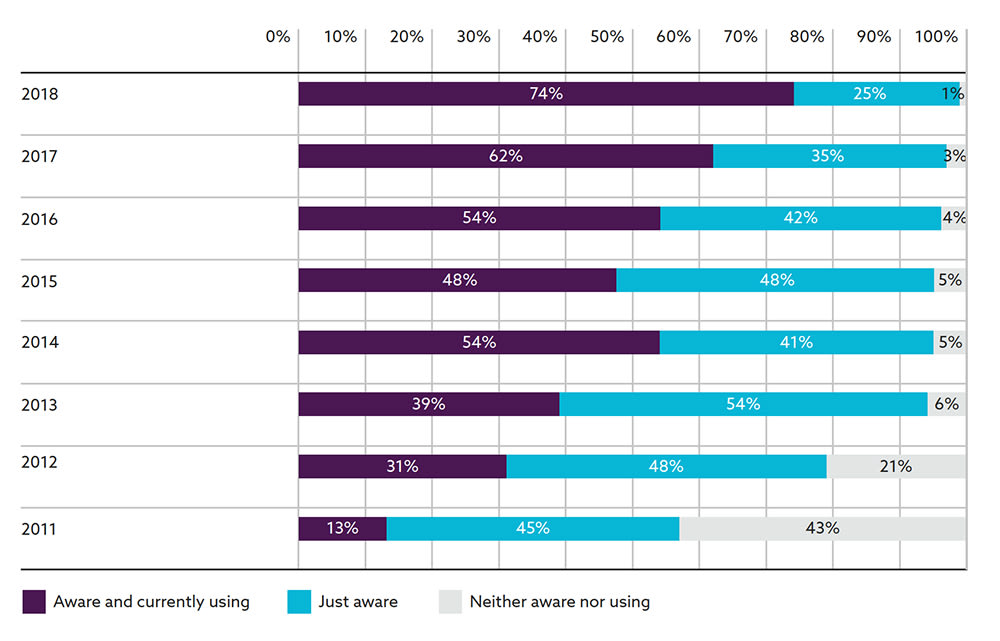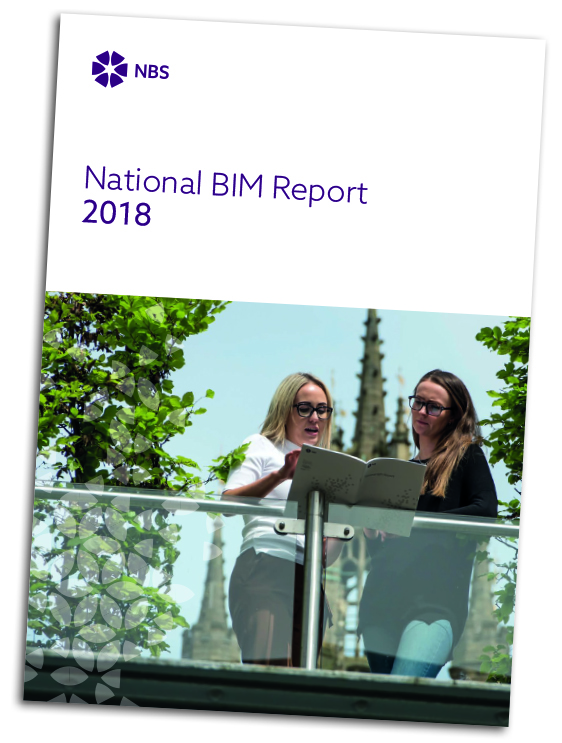The government needs to do more to ensure adoption of its BIM Level 2 mandate is one of the main conclusions of the annual NBS BIM survey, which overall paints a positive picture for uptake of BIM.
The survey shows that while almost two thirds of respondents (63%) agree that the government requires BIM on its projects, a very similar number (62%) say government is not enforcing this.
Just 14% of respondents believe the mandate has been not at all successful and 44% not that successful – with just 4% believing the BIM mandate has been very successful.
The report says that for tor the first time, fewer than a majority (47%) feel the government is “on the right track” with BIM.
While still a high percentage, it is less than last year (51%). Just over two fifths said they were not clear on what they have to do to comply with the mandate. Less than one fifth agreed that the construction industry is now delivering on the government’s 2016 BIM mandate.
Yet, of the 800 surveyed, nearly three quarters were “aware and using” BIM, with a minuscule 1% being unaware. All told, BIM usage has increased by 12% compared to last year, says the report.
“Extrapolating the growth that we’ve seen in BIM usage within organisations since 2015 suggests that we’ll reach 90% within the next three to five years,” the report forecasts
It continues: “We also asked people to tell us why they assessed the success of the mandate as they did. If people felt that the mandate was not successful, this was almost always because the government wasn’t seen to be doing enough to promote, enforce and embed BIM, and almost never because the aim of the mandate, to embed BIM in UK construction, was seen as a mistake. The government needs to go deeper and wider in its enforcement of the mandate.”
BIM adoption over time

But some commentators believe the results point to a successful BIM Level 2 implementation.
BIM Strategy’s founder Jon Adams said: “In my mind, the UK government BIM mandate has been a huge success in accelerating a much-needed digitisation of our industry in a structured approach.
“Did they hit every coconut they aimed for in 2011? Well, no they didn’t”
But he said that to claim the work of organisations like the BIM Task Group to make BIM Level 2 practically inevitable over the next decade had been unsuccessful was “deeply unfair and way wide of the mark”.
Other key findings from the report were:
- BIM can bring benefits beyond the design stages – 67% see that using BIM results in operational and maintenance savings.
- 77% agree that clients do not understand the benefits of BIM – a fact lamented in the BIM+’s own survey published in April https://www.bimplus.co.uk/news/bim-level-2-uptake-still-slow-ar-and-automation/.
- Lack of in-house expertise is the main barrier to BIM adoption. Other factors include lack of training, lack of time to get up to speed and even a lack of client demand.
- 82% agree that BIM is the future of the design process, and with over three quarters having now adopted BIM, it is a future that we’re seeing realised.
- People remain distrustful of what they hear about BIM (only 36% trust what they ‘hear about BIM’).
- Only 27% think that the UK is the world leader in BIM. That said, many people commented in the free text on how well the UK is doing.
- Few (22%) believe that clarity on delivering Level 3 will come soon.
Although 70% of respondents call for more standardisation of BIM the report does indicate that an increasing number of respondents are using PAS 1192-2:2013 (44%) and Uniclass is gaining strong traction with just over a third now using the classification system.
NBS CEO Richard Waterhouse said: “One example of how the UK is helping to shape the global BIM world is the development of ISO 19650, Parts One and Two, which are being developed in partnership with the global community to ingrain a standard method of working internationally – a great example of how the UK is pushing ahead internationally and more examples are highlighted in the report.
How successful do you think the UK government’s 2016 BIM Mandate has been?

“BIM is more than the production of 3D models and collaboration is more than reducing coordination problems on-site through clash detection at design time.
“The next stage of the BIM journey must focus on both the information generated from the models and the information linked to the models. For this standardised information, structures must be followed in terms of the objects in the model and linked data sources such as project specifications.
“NBS will continue to work with partners in the industry to help set these standards.”
Dr Stephen Hamil, director of research and innovation at NBS, said: “Emerging technologies are continuing to provide new opportunities. The move from desktop to cloud computing will be a game changer in terms of collaboration, performance and transparency of decision making.
“Future transformative technology will build upon this this foundation, helping us to create a step-change in productivity and quality within the industry and NBS can and will play a part in this journey.”
The 2018 report had 808 responses from a range of large to small practices and organisations carrying out a range of project types. The largest group to respond were architects (33%) with architectural technologists, BIM managers and technicians, clients, contractors, civil, structural and service engineers, surveyors and landscape architects all represented.

The next stage of the BIM journey must focus on both the information generated from the models and the information linked to the models.– Richard Waterhouse, CEO, NBS













